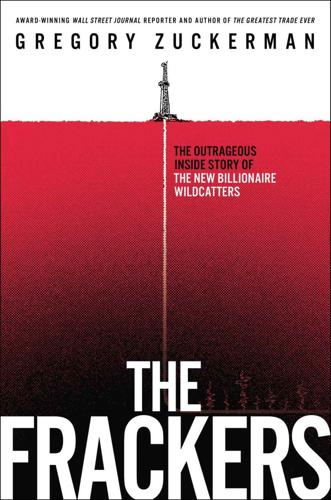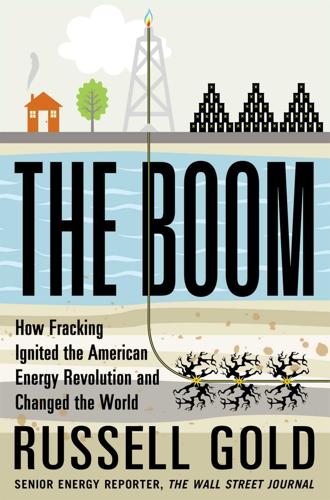
Strangers in Their Own Land: Anger and Mourning on the American Right
by
Arlie Russell Hochschild
Published 5 Sep 2016
Projections suggest that over 13,000 jobs will need to be filled by people migrating to SWLA” (3). 74Filipino workers have worked for over a decade on oil platforms in the Gulf CSRS, ibid. Often the presence of Filipino workers in Louisiana comes to light via news of accidents on oil rigs. Jennifer A. Dlouhy, “Dangers Face Immigrant Contract Workforce in Gulf,” FuelFix, November 3, 2013, http://fuelfix.com/blog/2013/11/03/dangers-face-immigrant-contractor-workforce-in-gulf. The local television station also ran a story about an injured Filipino worker injured on a Gulf oil rig. Associate Press, “Gulf Platform Owner Sued Over Deadly 2012 Blast,” KPLC-TV, http://www.kplctv.com/story/23832004/gulf-platform-owner-sued-over-deadly-2012-blast. 75tours through plantation manor homes, catching fish, and farming Curt Eysink, Louisiana Workforce Information Review, 2010, Statewide Report, https://www.doleta.gov/performance/results/AnnualReports/2010_economic_reports/la_economic_report_py2010_workforce.pdf 75down from 42 percent in 1982 Ballotpedia, “Louisiana State Budget and Finances,” 2013, https://ballotpedia.org/Louisiana_state_budget_and_finances.
…
But some of his grand vision glosses over possible problems now troubling local residents. He slows down his SUV to point out the window to an acre of grass. “See that? We could plant a screen of trees right there, and put up a ‘man camp’ behind it.” “A man camp?” I ask. “We’re expecting 5,000 temporary construction workers and 500 permanent technical workers. The construction workers will stay in man camps,” he explains matter-of-factly. According to the local American Press, industry would have openings for new welders, scaffolding workers, pipefitters, operators, iron workers, insulators, instrumentation techs, and electricians.
…
According to the 2014 Sasol-sponsored Southwest Louisiana Regional Impact Study, some 18,000 jobs, a small proportion of them permanent, would open up by 2018. But seven out of ten of these jobs would be filled, the report said, by workers from outside southwest Louisiana. Many companies would recruit professionals from around the world. Construction workers building the “man camps”—barracks within enclosed encampments—were Mexican, people said. The man camps would house 5,000 pipefitters, an undisclosed number of them Filipinos on temporary visas. Filipino workers have worked for over a decade on oil platforms in the Gulf. Meanwhile, most permanent jobs in the state—85 percent of them—involved doing something else, such as teaching children, nursing the ill, building mobile homes, playground equipment, and yachts, repairing aircraft, being stagehands for films being made in what some were calling the “Hollywood of the South,” conducting tours through plantation manor homes, catching fish, and farming.

The Frackers: The Outrageous Inside Story of the New Billionaire Wildcatters
by
Gregory Zuckerman
Published 5 Nov 2013
Prices climbed so fast that a priest in Sydney, Montana, a city about an hour’s drive from Williston and near some oil drilling, gave a Sunday sermon urging neighbors not to gouge each other on rents. Some moving to the area receive housing from their employers, or enjoy a subsidy from their job enabling them to afford reasonable housing. Others settle into “man camps,” military-style complexes with communal showers and bathrooms. The rooms are clean, private, and efficient, usually featuring a bed, a small desk and refrigerator, and a flat-screen television. Some man camps even have elaborate cafeterias, gyms, laundries, and video-game rooms. The camps aren’t especially rowdy places. Most field hands are too exhausted after working twelve straight hours to do much carousing, and management forbids alcohol—though violence sometimes results from having so many cooped-up men in the same facility.
…
“If you want to go work for Humble Oil, fine, then you can drive around in a pretty good Chevrolet,” the professor said, referring to a major energy producer at the time that later became part of Exxon. “But if you want to drive around in a Cadillac, you’d better go out on your own someday.” Mitchell earned a degree in petroleum engineering in 1940 and then worked in Louisiana’s Cajun country on an Amoco oil rig. Then World War II broke out. Like many of his friends, Mitchell expected to see combat overseas. He was wary, however, after mourning too many friends who had died abroad. Instead, he enlisted with the U.S. Army Corps of Engineers. Mitchell tried to convince his commanding officer that he was indispensable in the Houston area.
…
And Hamm had overruled key members of his team and agreed to spend about $80 million of precious cash to buy acreage in a field in Wyoming that would prove a disappointment. Hamm had to halt almost all of his company’s drilling and let most of his drilling pros go. By the end of 1998, Continental was operating just one oil rig, down from eight, and only had about fifty employees on staff. To avoid additional layoffs, every employee took a 15 percent pay cut. Almost everyone in the business understood that low oil prices were due to excessive global supply and an economy that seemed less reliant on oil and gas. Hamm wasn’t like everyone else, though.

Hope Dies Last: Visionary People Across the World, Fighting to Find Us a Future
by
Alan Weisman
Published 21 Apr 2025
With the world not holding at a 1.5°C temperature rise over preindustrial levels, and probably not 2°C either, “by midcentury, sea level could rise half a meter, so—” Azzam stops mid-sentence, knowing that it means seawater will be all the way to here. The marshes need water, but not that kind. To the north, Turkey threatens to build yet another dam, and to the south, the Gulf is rising; exploratory oil rigs are circling the marshes; and with chaos in Ukraine causing food riots over cooking-oil shortages, agriculture wants more water. But the good news is that the latest minister of water resources is interested in the marshes. Granted, as an engineer under Saddam, he signed the study for draining them.
…
Makris knew; he grew up in Glen Cove, Long Island, sailing with his father. “You should start near the coast, in a relatively benign environment,” he said. “Farther offshore, sea-states get increasingly difficult, with high waves constantly hitting you. You would need to design something similar to an offshore oil rig.” They assured him their plan was to be anchored firmly to the continental shelf, close to land. A naval architect Makris consulted had mentioned the challenge of having many platforms in close proximity without destroying each other. “You’ll need to reinforce your concrete with steel, otherwise it’ll fracture too easily.
…
To Enbridge, $11 million for a little sloppiness as they raced to finish the pipeline before some judge stopped it was a pittance. After another $1,000 fine, the state forgave the criminal charge. During the entire job, just four pipeline workers were arrested for sex-trafficking Native minors—touted as an improvement over the chronic sex-for-drugs violence in North Dakota’s oil field “man camps.” Meanwhile, damage to the Mississippi watershed had commenced, with more to come as joints inevitably failed and pipe corroded. Each year, CO2 from burning Line 3’s payload crude would equal the fumes of 38 million cars. * * * — “Canada,” said Winona LaDuke, “is a petro-state. Its economic plan is extraction.

The Boom: How Fracking Ignited the American Energy Revolution and Changed the World
by
Russell Gold
Published 7 Apr 2014
A young woman named Karen Silkwood, subject of the 1983 movie for which Meryl Streep was nominated for an Academy Award about her whistle-blowing and mysterious death, worked at a Kerr-McGee subsidiary in the early 1970s. Joe McClendon, however, wasn’t involved in either cutting-edge fossil-fuel exploration or the dangerous world of atom splitting. He sold gasoline and other petroleum products to gas stations. When the younger McClendon spent time with his father on the job, there was no romance of the oil rig. “I spent time looking at dirty bathrooms in gas stations,” he remembered years later. He attended Heritage Hall, a relatively new private high school that offered a less rigid social environment than Oklahoma City’s other elite prep schools. Aubrey excelled both socially and academically. He was elected senior class president and was covaledictorian.
…
Unemployment was rampant, and for the first time in years, keeping his family fed and under a roof became a challenge. He was accustomed to working hard outside. His search for work brought him to Baker Hughes, a large oil-field service company. For two weeks at a stretch, he lives in one of the many man camps that have been built in North Dakota. Cobbled together in a hurry, these sprawling complexes of connected modular buildings can hold seven hundred to one thousand workers each. Each man gets a narrow private room with enough space for a single bed, a desk, and a dresser. A flat-screen television perches above the dresser.
…
When Henderson’s two weeks are up, he will head home to his wife and kids in Georgia, where he now lives. Few workers in the Bakken oil field are from North Dakota. The Bakken boom is occurring in one of the most sparsely populated parts of the country. The population of the entire western part of the state could fit in a college football stadium. The largest operator of these man camps will soon house one out of every hundred North Dakotans. Sly Henderson’s story is typical. “Everyone comes for the money. Everyone comes because they’re out of work,” says Byington. “The guys who make it, who stick around, come from a working background. They’re used to working hard for long hours.”

Better, Stronger, Faster: The Myth of American Decline . . . And the Rise of a New Economy
by
Daniel Gross
Published 7 May 2012
It turned out that hydraulic fracturing, or fracking—the technique first developed in the Barnett Shale in Texas, in which massive water pressure is applied to liberate natural gas from rock—can also be used to liberate liquid oil. In recent years drillers have also perfected horizontal drilling techniques, delving up to two miles deep and then two miles across—an efficient means of exploring vast stretches of territory. Once the two techniques were married in the Bakken Shale in 2007, oil rigs and workers came rushing in. Oil production rose sharply, from 45.9 million barrels in 2007 to 113 million in 2010 and more than 150 million in 2011, making North Dakota the fourth-largest oil-producing state in the United States and a larger force in the market than Ecuador, an OPEC member. With more investment in the Bakken Shale, which covers a swath of North Dakota that is larger than the state of Maryland, locals believe production can double from the current level of 418,000 barrels per day.
…
The boom has created demand for truckers, accountants, cooks, and HR managers, in addition to roughnecks. Even low-skilled jobs can command high wages. In tiny Williston, population 14,716, gas stations, convenience stores, and McDonald’s are offering $12.50 to $15 an hour for entry-level jobs. “Man camps”—temporary housing structures carted in from out of state—were seeking to hire cooks and cleaners making $1,500 and $1,000 per week, respectively. The boom is rippling back across the state. Tax collections related to oil and gas production and extraction soared from $251 million in 2007 to $750 million in 2010.

This Changes Everything: Capitalism vs. The Climate
by
Naomi Klein
Published 15 Sep 2014
It is telling, for instance, that more than half of the reserves Exxon added in 2011 come from a single oil project: the massive Kearl mine being developed in the Alberta tar sands.56 This imperative also means that, so long as this business model is in place, no coastline or aquifer will be safe. Every victory against the fossil fuel companies, no matter how hard won, will be temporary, just waiting to be overtaken with howls of “Drill, Baby, Drill.” It won’t be enough even when we can walk across the Gulf of Mexico on the oil rigs, or when Australia’s Great Barrier Reef is a parking lot for coal tankers, or when Greenland’s melting ice sheet is stained black from a spill we have no idea how to clean up. Because these companies will always need more reserves to top up their replacement ratios, year after year after year. From the perspective of a fossil fuel company, going after these high-risk carbon deposits is not a matter of choice—it is its fiduciary responsibility to shareholders, who insist on earning the same kinds of mega-profits next year as they did this year and last year.
…
Indeed, many Blockadia activists cite the 2010 BP disaster in the Gulf of Mexico as either their political awakening, or the moment they realized they absolutely had to win their various battles against extreme energy. The facts of that case are familiar but bear repeating. In what became the largest accidental marine oil spill in history, a state-of-the-art offshore oil rig exploded, killing eleven workers, while oil gushed from the ruptured Macondo wellhead about one and a half kilometers below the surface. What made the strongest impression on the horrified public was not the tar-coated tourist beaches in Florida or the oil-soaked pelicans in Louisiana. It was the harrowing combination of the oil giant’s complete lack of preparedness for a blowout at those depths, as it scrambled for failed fix after failed fix, and the cluelessness of the government regulators and responders.
…
Is not the hatred of the coal companies, or anger, but love will save that place.”11 This is also what makes Blockadia conflicts so intensely polarized. Because the culture of fossil fuel extraction is—by both necessity and design—one of extreme rootlessness. The workforce of big rig drivers, pipefitters, miners, and engineers is, on the whole, highly mobile, moving from one worksite to the next and very often living in the now notorious “man camps”—self-enclosed army-base-style mobile communities that serve every need from gyms to movie theaters (often with an underground economy in prostitution). Even in places like Gillette, Wyoming, or Fort McMurray, Alberta, where extractive workers may stay for decades and raise their kids, the culture remains one of transience.